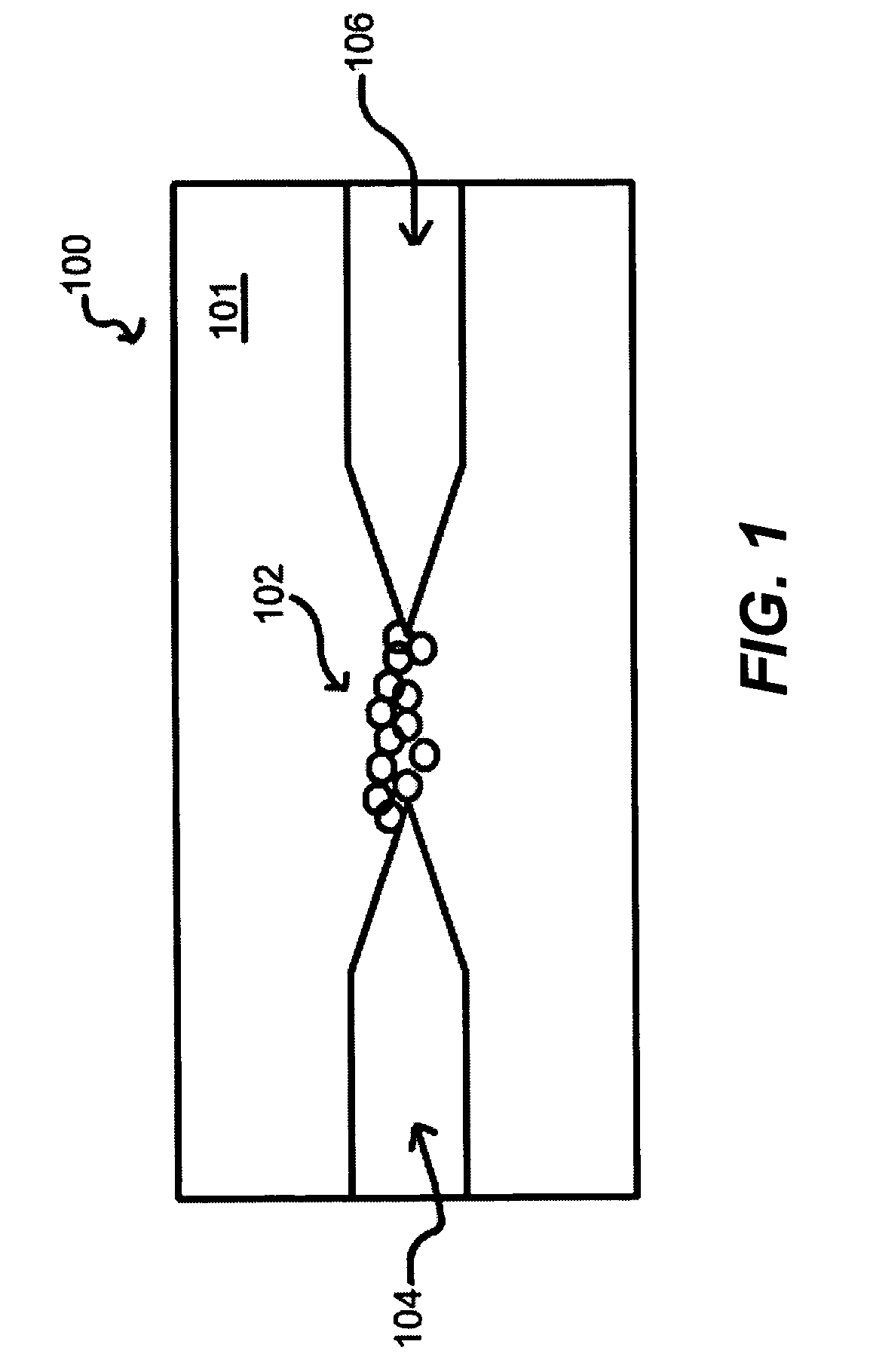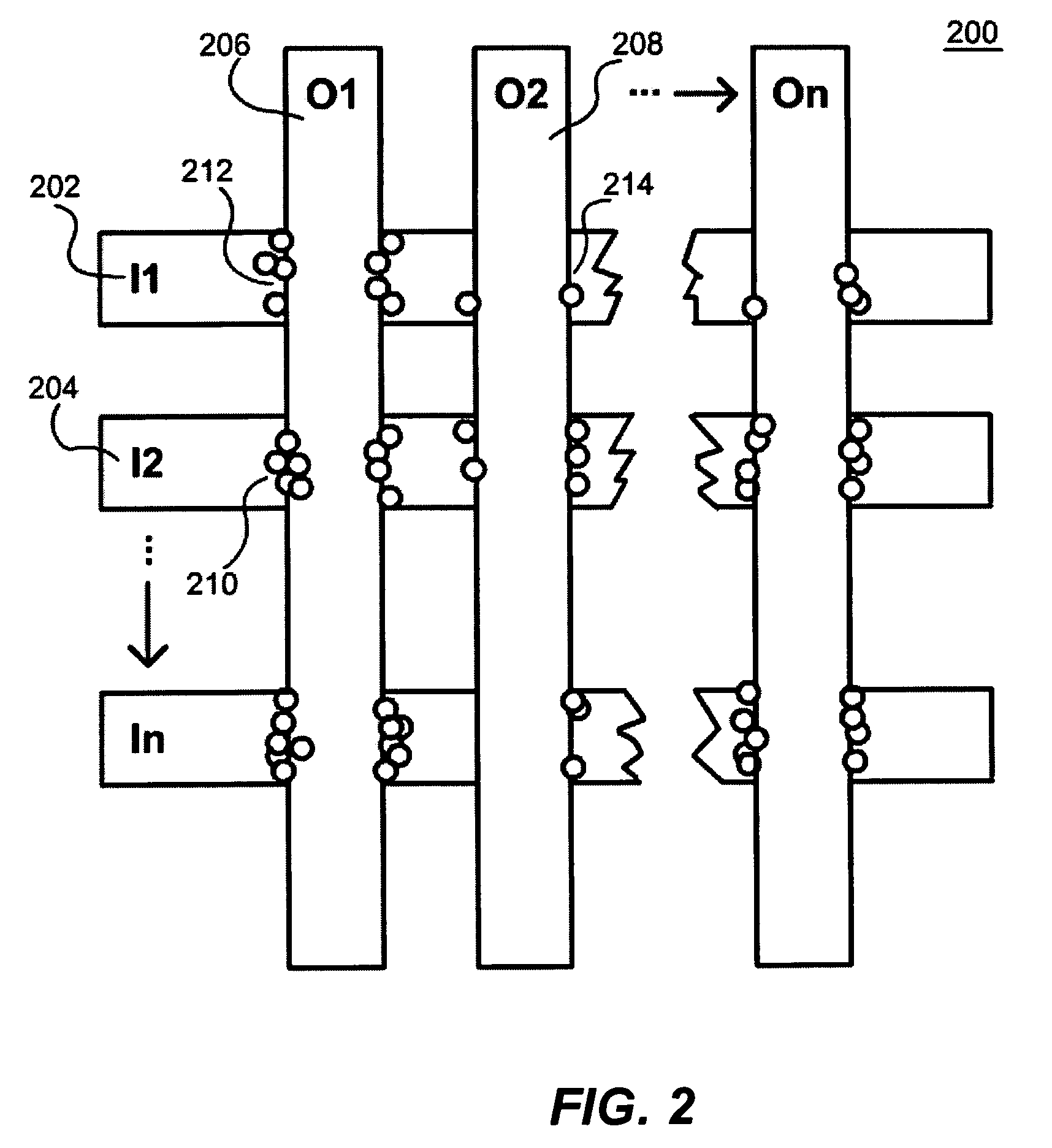Fractal memory and computational methods and systems based on nanotechnology
a computational method and nanotechnology technology, applied in the field of molecular technology, can solve the problems of inability to fully solve the problem of pattern recognition, inability to take advantage of the inherent parallelism of recognition algorithms, and limited methods to software-based implementations, and achieve the effect of improving the structure of the fractal tr
- Summary
- Abstract
- Description
- Claims
- Application Information
AI Technical Summary
Benefits of technology
Problems solved by technology
Method used
Image
Examples
Embodiment Construction
[0049]The particular values and configurations discussed in these non-limiting examples can be varied and are cited merely to illustrate an embodiment of the present invention and are not intended to limit the scope of the invention.
[0050]FIG. 1 illustrates a graphical representation of a self-assembling system 100 that can be adapted for use in accordance with one or more embodiments. System 100 can be utilized to implement an apparatus or system referred to as a Knowm™ network or device. System 100 can be implemented as a physical neural network device that can, among many applications, extract information from a data-stream. The information processed can drive a plasticity rule that utilizes high-gradient-density electric fields to attract, and random thermal motion to repel, particles suspended in a liquid-interface in the context of a traditional integrated electronic chip.
[0051]Statistical regularities from the data stream can be coupled to the alignment of molecular connectio...
PUM
 Login to View More
Login to View More Abstract
Description
Claims
Application Information
 Login to View More
Login to View More - R&D
- Intellectual Property
- Life Sciences
- Materials
- Tech Scout
- Unparalleled Data Quality
- Higher Quality Content
- 60% Fewer Hallucinations
Browse by: Latest US Patents, China's latest patents, Technical Efficacy Thesaurus, Application Domain, Technology Topic, Popular Technical Reports.
© 2025 PatSnap. All rights reserved.Legal|Privacy policy|Modern Slavery Act Transparency Statement|Sitemap|About US| Contact US: help@patsnap.com



